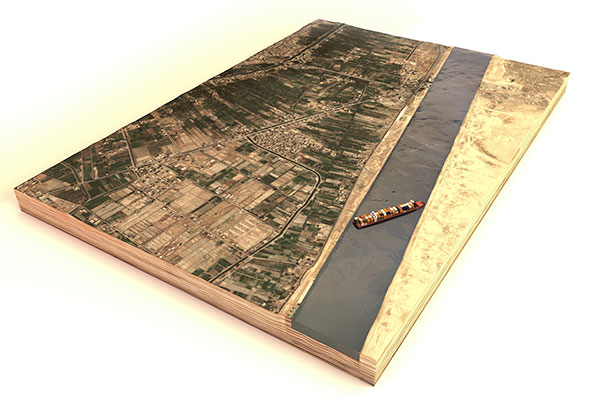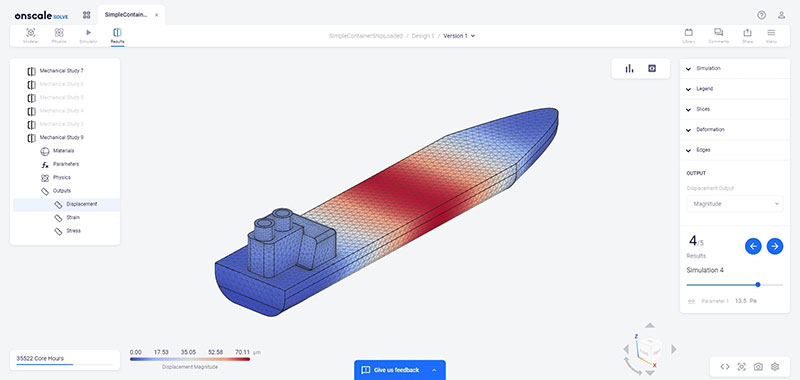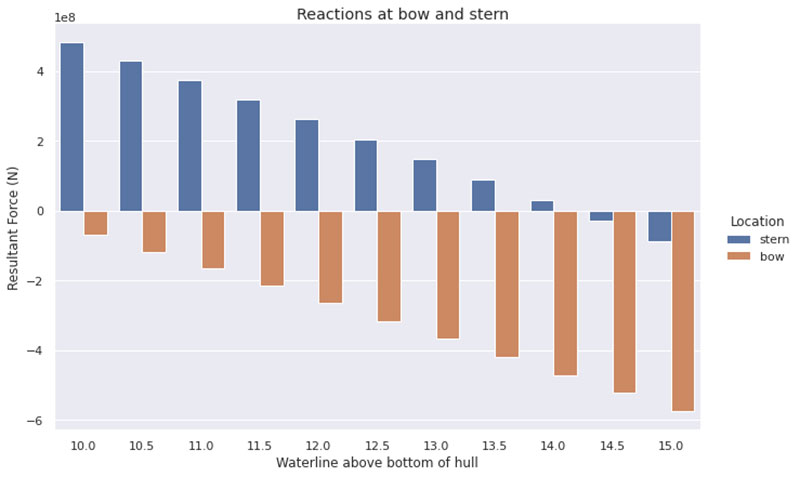Using Multiphysics Simulation to Unblock the Suez Canal
Could OnScale's Multiphysics simulation have been the key to solving the global supply disturbance amounting to $400 million per hour?

Latest News
April 2, 2021
OnScale Solve
When your time is worth $400 million per hour, it’s vital that your simulations never slow you down. The economy worldwide is finally out of the mud which has slowed us down the past week, and the Ever Given container ship is free.
Causing disturbances to global supply of $400 million per hour, engineers in Egypt and beyond racked their brains for a solution. Billions of dollars of lost trade and many sleepless nights later, tides complied with their plan to free the ship.
Problems like this require fast trial and error, which is uniquely expensive in practice when dealing with a cargo ship weighing 200,000 tons without cargo. And this is without the complication of connecting Japanese and Egyptian engineering teams.
Multi-physics Simulation Platform
If this should ever happen again, OnScale Solve offers a simpler route to take to a solution.

Image credit: Scott McClennan
With an easy to use interface, insightful results, and Jupyter Notebooks, engineers worldwide can collaborate on complex problems like a cargo ship the size of the Empire State Building stuck blocking one of the busiest trade routes in the world from any location and device.
This is exactly what our team of engineers did this morning.
After tugboat and dredging efforts proved to not be enough, Egyptian engineers freed the vessel after the full moon raised tides 18 inches (~0.5m). Our simulation focuses on this method of freeing the craft.
We started by designing a model made in Onshape, integrating the model directly into Solve for testing. OnScale engineers used Solve’s upcoming new functionality, Scripted Study, to parameterize the position of the waterline and ran a parametric sweep to see how high of a tide the boat needed to float once again, assuming an evenly loaded ship.
Here’s the expression we used:
pressure_2 = on.loads.Pressure(f'1000*9.81*($Parameter 1$-z)*heaviside($Parameter 1$-z)', alias='Hydrostatic Pressure')
This is just P = rho.g.h.step(x), where step(x) = 0 for x <= 0 and step(x) = 1 for x > 0 and h is the water depth.
With a dry canal, the reactions facing the boat equal the weight. After a quick simulation, we discovered that the stern floats when the waterline is ~9.75m above the hull. When water rises to 13.5m, the bow is almost off the mud. Moving forward to the results, simplifying and treating the mud conditions as fixed, we then plotted the reactions in our post processor Jupyter notebook, presenting the model as follows.
When the water level finally reached 14m above the hull, the Ever Given came free! That is how we used multi-physics simulation to unblock the Suez Canal!

Image credit: Scott McClennan
The set up and simulation of 11 cases takes just a few minutes and makes use of solver expressions through a Solve Scripted Study. The Post Processor Jupyter Notebook enables in-depth custom analysis of the results. All of these options are standard in OnScale Solve.
With the speed of OnScale Solve simulation, engineers worldwide can arrive at solutions quicker than ever, quite possibly saving billions of dollars in circumstances like this.
Whether you want to understand how your back-ordered couch started moving again, or want to try your hand in developing solutions to freeing the Ever Given and unlocking the global economy, create a free account in OnScale Solve and get it moving today!
This simulation and other like it make use of features coming soon to Solve through Scripted Study, including:
- Modal Analysis
- Transient Analysis
- Probe Points
- Rigid Bodies
- Radiation Boundary Conditions
- General Math expressions
- Initial Conditions
- Coordinate Systems
Related Software
OnScale Solve™
The fastest & most powerful cloud-native engineering simulation platform. Create your account now!
More OnScale Coverage

Subscribe to our FREE magazine, FREE email newsletters or both!
Latest News
Related Topics







